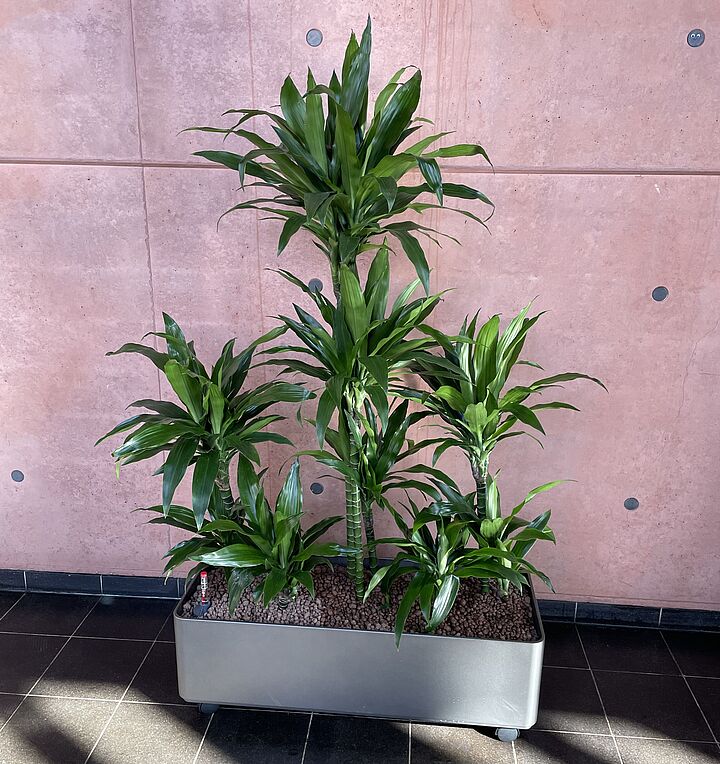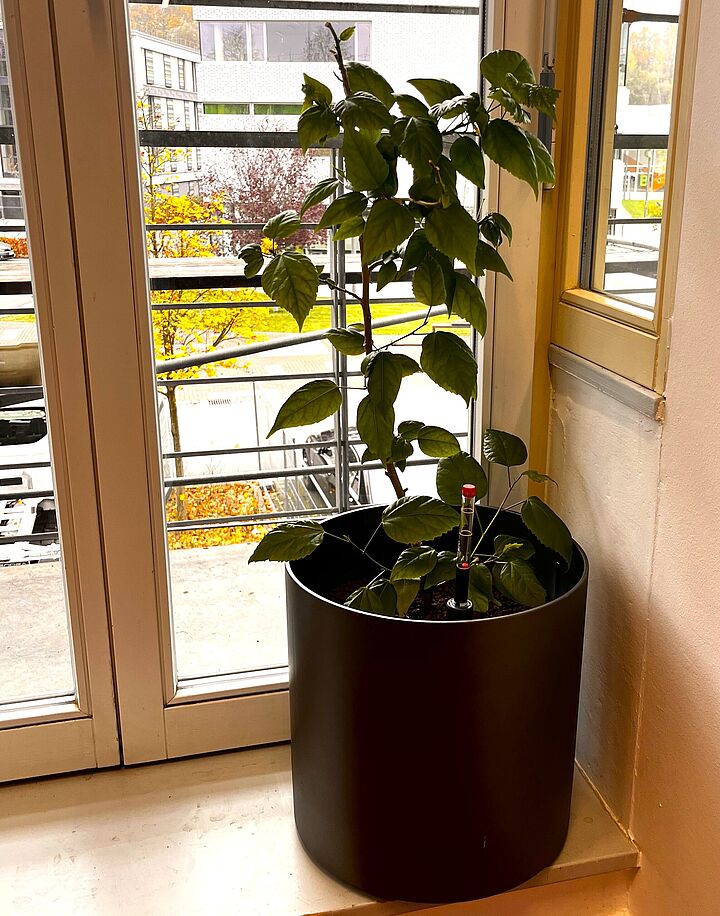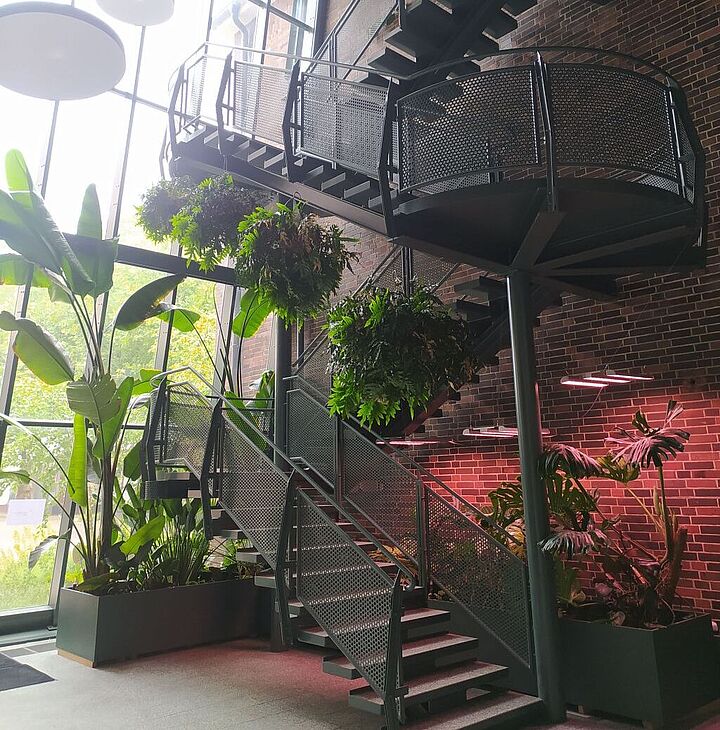Plants in offices and workspaces promote health and well-being
Indoor plants improve air quality and humidity, thus promoting health and well-being. The Sustainability Office is committed to outfitting offices and workspaces at TH Wildau with plants. This requires the acquisition of plants, but also the willingness of university members to maintain and water them regularly.
In some offices in buildings 13, 14, 15, 16 and 100, employees have already set up plants and in the Opp:lab and ViNN:lab, plants are an important part of the interior design. In the summer of 2024, the Sustainability Working Group at TH Wildau purchased two plant tubs with aralia and dragon tree plants for the so-called cafeteria on the ground floor of Hall 10. Students who meet there to study or chill now enjoy a slightly improved indoor climate.
In September of 2024, an announcement was made using the university's email distribution list that three additional plant care sets - consisting of planters with casters, clay pebbles, and water level indicators - were available to interested parties on campus. They were distributed on a "first-come-first-serve" basis: to the INW dean's office in House 19, the telematics model living space in Lok21, and the microsystems technology/system integration research group in House 16.
In the summer of 2025, the Sustainability Office will probably purchase additional care sets (planters with casters, clay pebbles, water level indicators), which interested university members can use for plant cuttings they may, for example, bring from home. The clay pebbles in the care sets help to prevent waterlogging, while the water level indicators remind caretakers to add water. When the red stick in the plastic tube is invisible, the plant needs water.
How do plants serve our health?
Plants provide valuable services in our offices and living spaces. Their contributions are therefore called ecosystem services. The central ecosystem service provided by plants is photosynthesis, to absorb CO₂ and release oxygen. Other services include:
Improving air quality: plants filter the air of pollutants such as formaldehyde, benzene, xylene, toluene, trichloroethylene and ammonia, which are released in many rooms, e.g. by the varnish on furniture, by electronic devices such as printers or by the use of cleaning agents that contain these chemicals. Clean air means less strain on the respiratory system, better sleep and a reduced risk of headaches and allergies. Through photosynthesis, they also increase the oxygen content in the air.
Increasing humidity: plants release moisture into the room air through their leaves. This transpiration is particularly important in heated rooms during the winter months, when the air is dried out by heating. Higher humidity reduces dry skin, irritated mucous membranes and complaints such as coughing or burning eyes. The evaporation cools room air. In this way, plants also help to regulate the temperature.
Reducing dust pollution: plant leaves bind dust particles from the air and reduce the amount of fine dust indoors. The leaves also dampen sound waves and thus contribute to noise reduction. In addition, the green color of the leaves has a calming effect on the psyche and can lower our stress levels and increase our well-being.
Many houseplants require little water and thrive in low light. With minimal effort, these plants stay healthy for years and actively improve the indoor climate. See information box in the upper right. However, houseplants are no substitute for regular ventilation.



